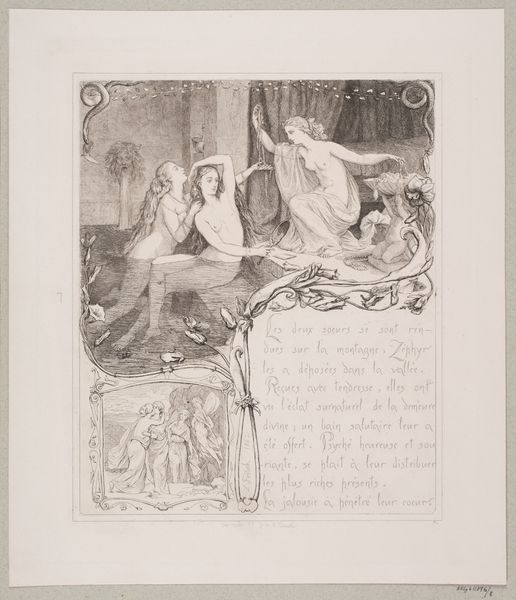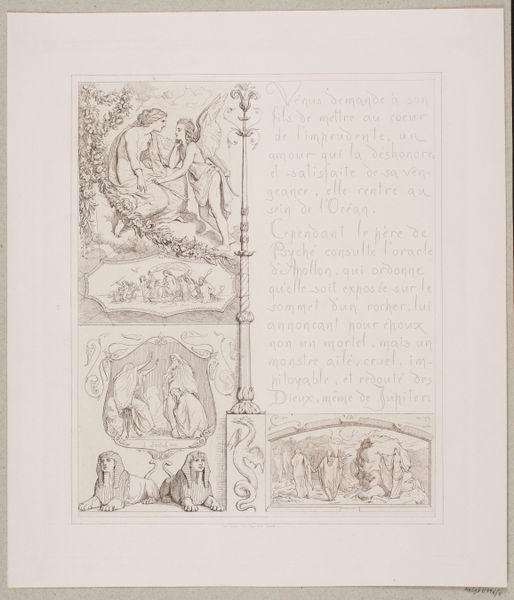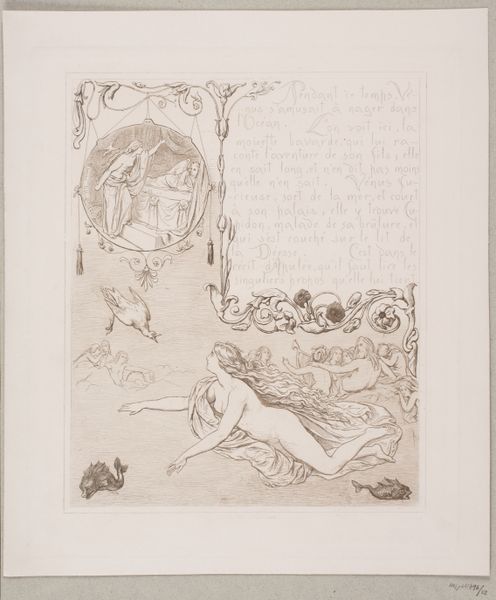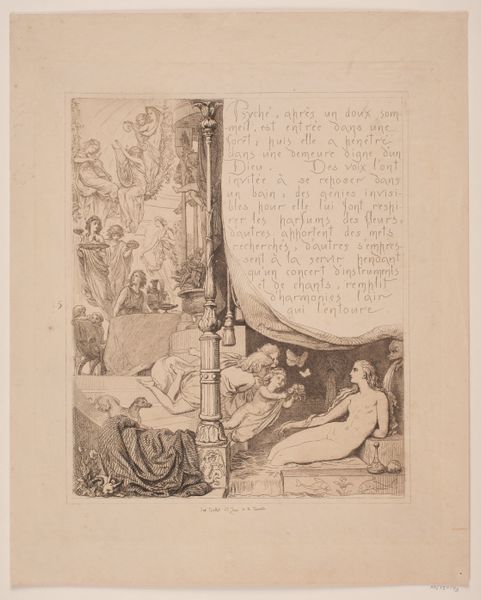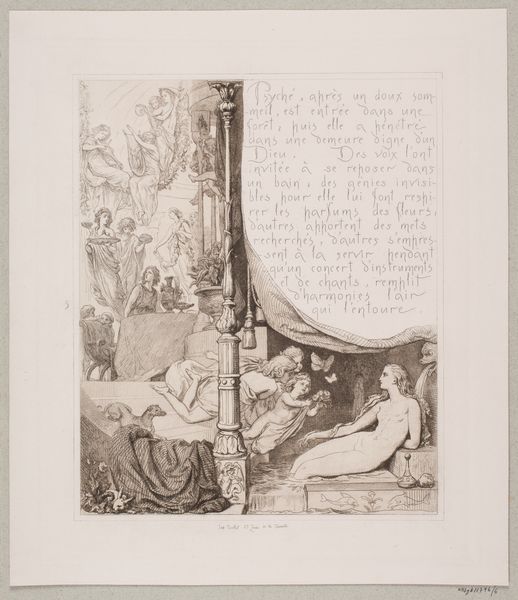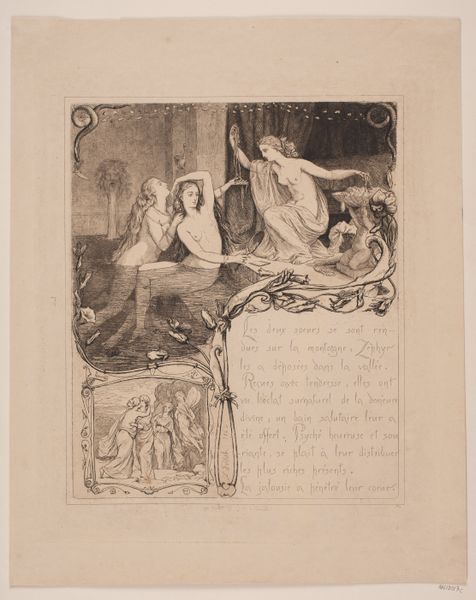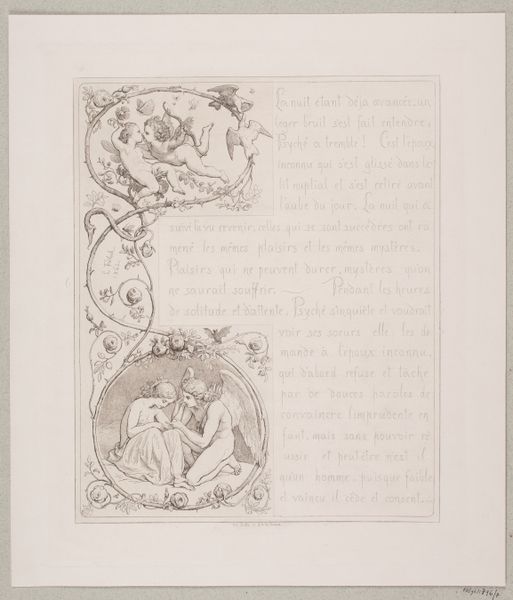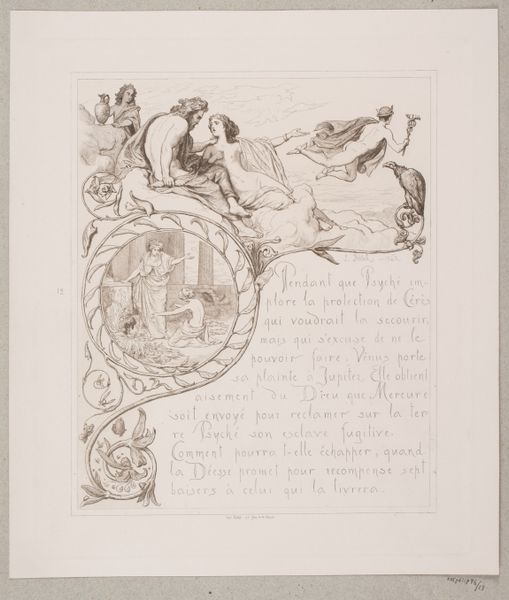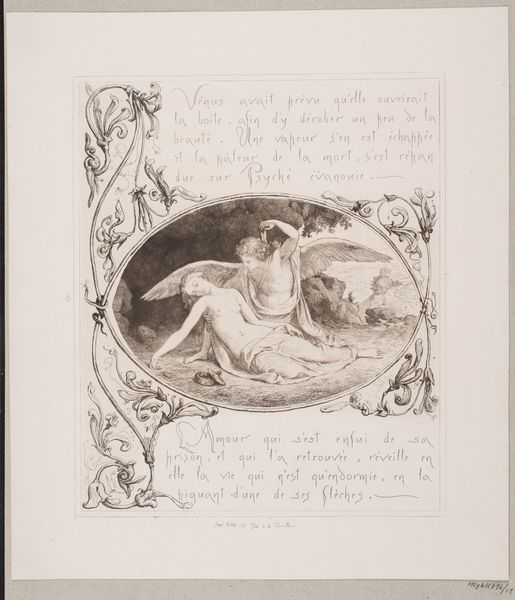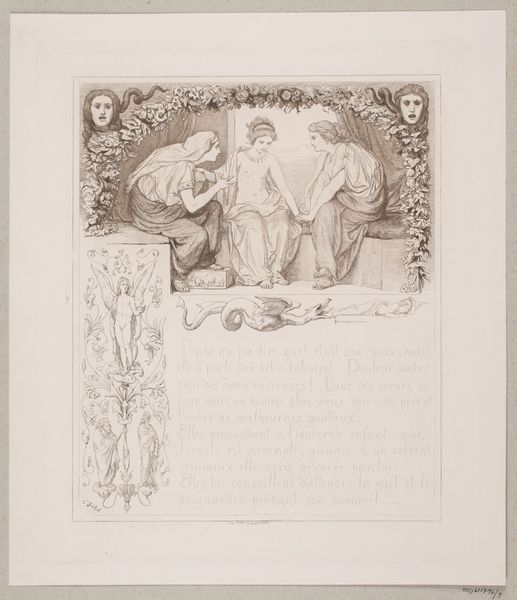
Dimensions: 351 mm (height) x 308 mm (width) (bladmaal)
Curator: Lorenz Frølich created this illustration in 1862, titled "Illustration nr. 13 til 'L`Amour et Psyché'," currently held at the SMK in Copenhagen. It is a print incorporating drawing and engraving, showing a scene rich in narrative detail. Editor: It has a distinct melancholy air. The figures, rendered in delicate lines, are caught in moments of what feels like profound emotional turmoil. What stands out to me is the material's potential to mass produce similar versions of the print – offering replications of feeling and emotion on display. Curator: Absolutely. The use of engraving allows Frølich to disseminate this particular interpretation of the Cupid and Psyche myth widely. What’s especially potent here is the depiction of Venus's dominance, not merely as divine authority but as a cruel, almost capricious wielding of power over Psyche, whose agency is visibly diminished. We have to consider the politics around the ways femininity, beauty, and obedience are performed here. Editor: Precisely. Look at the way Venus reclines, almost overflowing from her ornate chaise, while Psyche is on her knees, near a window. The division of space underscores the social relationships between the figures; also, I can imagine the physical labor that went into creating such detail, a stark contrast to the subject's opulence. Curator: Frølich's Romanticist style places emotion and subjectivity at the forefront. It seems almost proto-feminist when considering the vulnerability assigned to Psyche, versus the ruthlessness attributed to the 'divine' Venus, if we recognize vulnerability as historically tied to marginalization of women's rights. The entire visual field seems carefully orchestrated to communicate specific ideals concerning gender and power. Editor: Right, we see the outcome and now – perhaps – forget all about the artist’s process to realize these illustrations through pencil sketches. Curator: This print speaks to how art reflects—and helps to shape—contemporary discussions about gender, dominance, and female subjugation within established mythological narratives. Editor: Indeed. By looking closely at its production, at the materials used and its intended audience, we start to understand art's intricate entanglement within a social and labor framework.
Comments
No comments
Be the first to comment and join the conversation on the ultimate creative platform.
